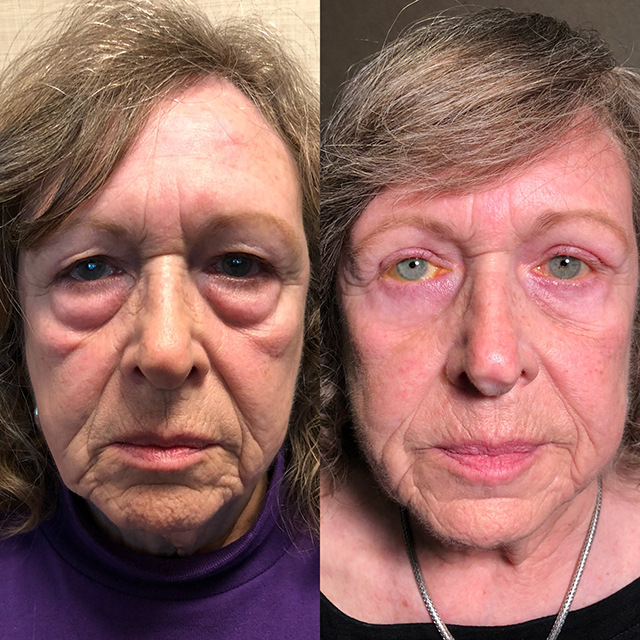- (913)-387-1104
- office@rsvpmedsa.com
- 13300 Metcalf Ave, Overland Park, KS 66213
Your eyes are often the first thing people notice about you and are an important aspect of your overall appearance. As we age, the tone and shape of our eyelids can loosen and sag. Heredity and sun exposure also contribute to this process. This excess, puffy or lax skin can make you appear more tired or older than you are. Eyelid surgery or blepharoplasty (pronounced “blef-a-ro-plasty”) can give the eyes a more youthful look by removing excess skin, bulging fat, and lax muscle from the upper or lower eyelids. If the sagging upper eyelid skin obstructs peripheral vision, blepharoplasty can eliminate the obstruction and expand the visual field.
Fat in the lower eyelids can be removed or repositioned through an incision hidden on the inner surface of the eyelid. Laser resurfacing or a chemical peel can be performed at the same time if desired, to smooth and tighten the lower lid skin. If there is excessive skin in the lower lid, the incision is made just below the lashes. Fat can be removed or repositioned through this incision, and the excess skin removed. The incision is then closed with fine sutures.
As a board-certified, fellowship trained oculoplastic surgeon with extensive training and experience, Dr. Selena Fu customizes each treatment to reflect each patient’s unique anatomy, skin condition, aesthetic concerns and lifestyle— an approach that consistently delivers excellent results for her patients.
Call for a personal consultation today, Dr. Fu will discuss the surgical and non-surgical options that will provide your best possible outcome. Insurance may cover all or a portion of reconstructive eyelid surgeries.


First Few Days
First Week
Weeks 2–4
Long-Term Results
Lower blepharoplasty is a cosmetic surgical procedure that removes excess skin, fat, and wrinkles from the lower eyelids to reduce under-eye bags and improve overall eye appearance.
There are two main approaches:
No visible scars with the transconjunctival approach. For subciliary blepharoplasty, the scar is minimal and fades over time.
The surgery usually takes 1 to 2 hours, depending on the technique used and the complexity of the case.
Local anesthesia with sedation or general anesthesia, depending on the patient’s preference and surgeon’s recommendation.
Discomfort is usually mild. Patients may feel tightness, dryness, or slight irritation, but severe pain is rare. Pain medication can be prescribed if needed.
While rare, possible complications include:
Results typically last 10-15 years, depending on aging, genetics, and lifestyle habits. While the procedure does not stop aging, it significantly rejuvenates the eye area.
Most patients return to work within 7-10 days, depending on the extent of swelling and bruising.
Yes, it is often combined with procedures like upper blepharoplasty, facelift, or laser skin resurfacing for a more comprehensive rejuvenation.
Costs vary depending on location, surgeon expertise, and whether additional procedures are performed. In the U.S., prices typically range from $3,000 to $7,000.
If you’re considering lower blepharoplasty, it’s important to consult with a board-certified surgeon to discuss your goals and determine the best approach for you.